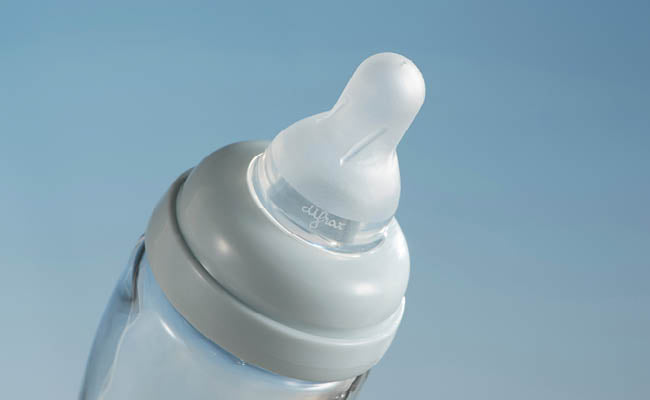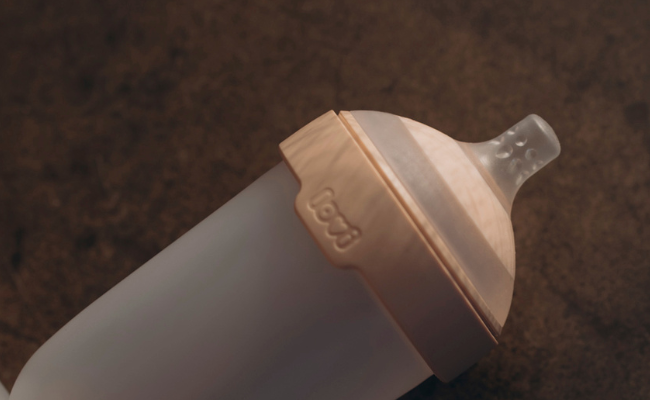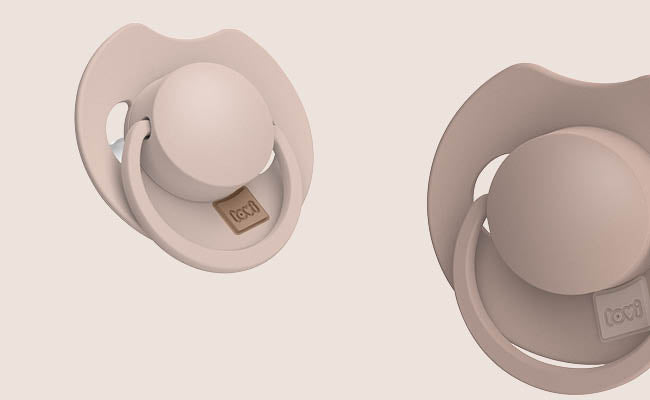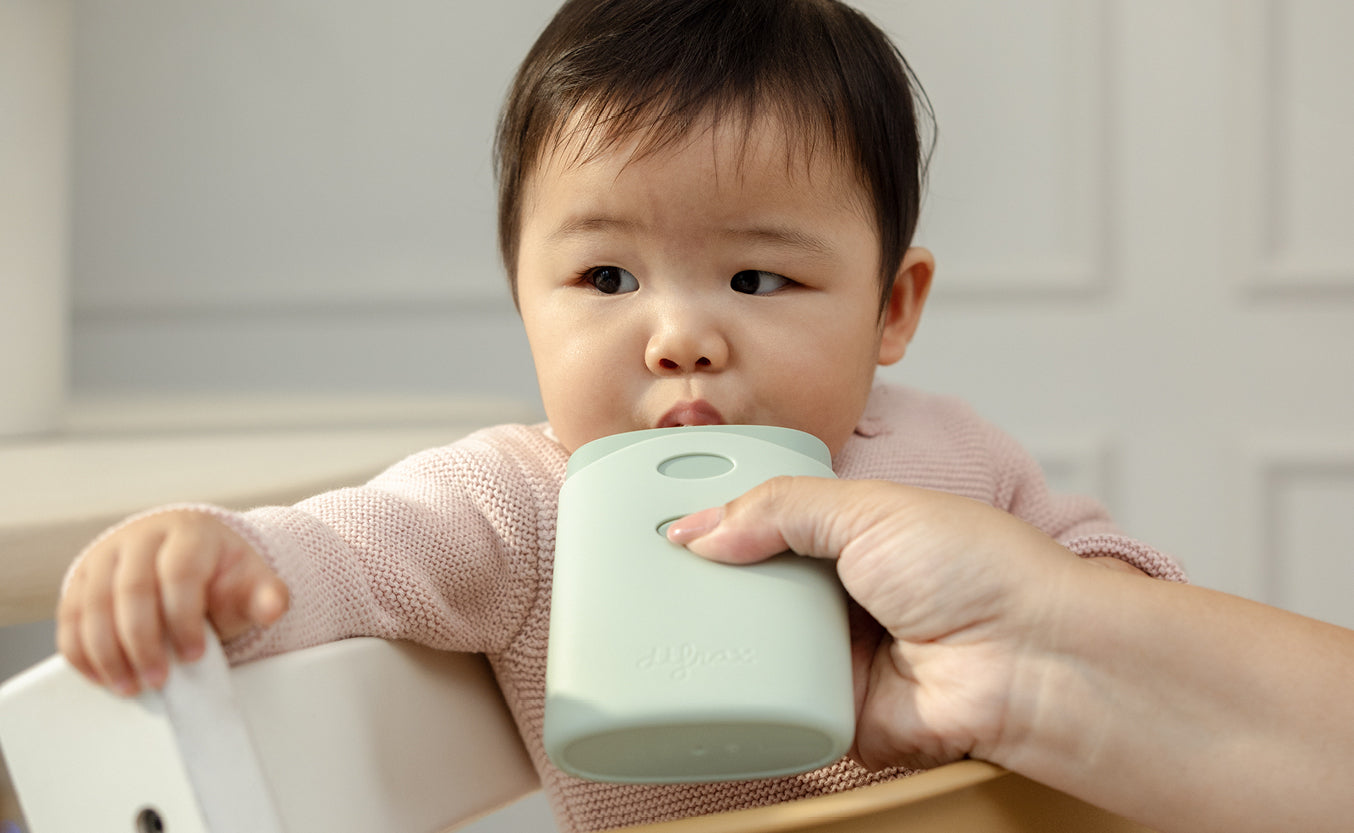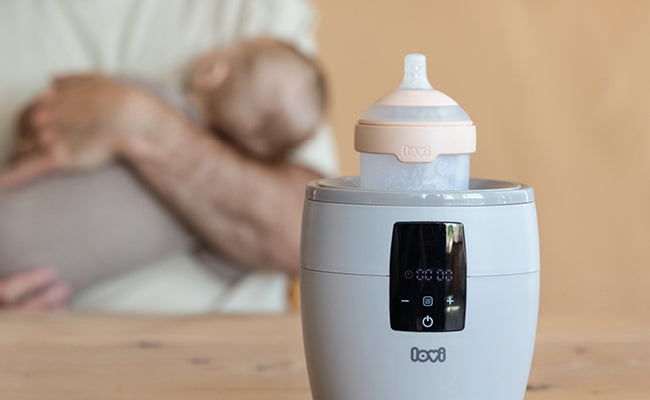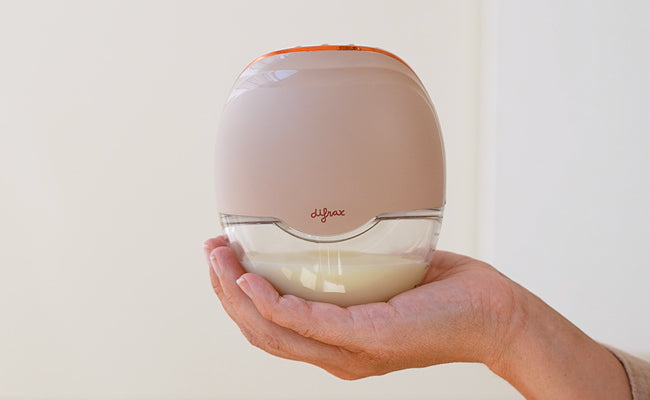
Difrax celebrates its 55th birthday! Tips and facts about our brand, the products and parenting
Offering a little help to parents is what Difrax has stood for for 55 years. We know better than anyone that having a baby can turn your world upside down. By developing innovative baby products and smart solutions, we help (expecting) parents all over the world. Difrax is keen to share its knowledge with you, so we've put together a number of handy tips and fun facts. There are no fewer than 55 of them, so enjoy reading and learning!
About Difrax, did you know that…
- the first Difrax product on the Dutch market was cotton buds? You can still buy them in our web shop.
- in the past Difrax also sold baby shoes and slippers? Each collection was named after a popular baby name at the time.
- the range has grown over the years to include more than 100 products? We offer baby bottles, pacifiers, training cups and teething toys, as well as smart care products.
- the name Difrax stands for 'Di' for Dimphna, 'Fra' for Frank, the founders in 1967, and 'X' for the (then unknown) successor?
- our brand is sold in more than 30 countries? Mums and dads can also find our products in Portugal, Cyprus and Australia. We are quite proud of this!
- Difrax has won several awards for best product design, such as the Reddot Design Award and the Baby Innovation Award?

Difrax products – handy tips and facts
- The iconic S-bottle has a larger opening at the bottom than at the neck of the bottle. Handy if you need a little more space when filling the bottle with frozen breast milk cubes.
- Does your baby have trouble dosing food from the bottle even with the small teat? No worries! This is normal and usually temporary. The Dental teat or the XS Variflow teat are a good intermediate step.
- Difrax pacifiers grow as your little one develops. Our pacifiers come in five different sizes from Newborn to 18+ months, in Natural and Dental. The butterfly-shaped shield is a unique design. As well as being very recognisable, it is also very useful! The shape ensures optimal airflow.
- The end of the pacifier (the sucking part) is called a baglet.
- Difrax also helps your baby to wean himself off the pacifier with its Giving up the pacifier book.
- Have you discovered the two holes at the bottom of the training cups yet? They make it easy for the water from the dishwasher to run out.
- Difrax works closely with medical specialists to develop the best products for you and your baby.
- The anti-colic S-bottle can be completely dismantled for hygienic cleaning and everything can go into the dishwasher! And Difrax also has glass bottles. This glass is also used in laboratories. Sounds very medical, doesn't it?
- The lid of the cup with straw can be easily clicked onto the cup. That way you won't lose it.
- Our Toddler Bowl has a high and a low side so that your child can easily scoop up food with the spoon. Is your child right-handed? Then place the high side on the left in front of your toddler. If your child is left-handed, the opposite applies.

You and your baby
- Did you know that the foetus starts moving as early as 8 weeks into the pregnancy? You won't feel these movements yet, as your baby is still only the size of a blueberry.
- The foetus starts producing urine from 13 weeks onwards, which it simply pees out into the amniotic fluid and drinks back. Don't worry, this is harmless!
- From week 18 you can feel your little one's first movements in your womb. How special!
- During your pregnancy dreams are often more intense and vivid. This is because hormones cause you to have more emotions to process at night.
- The pregnancy hormone HCG (human chorionic gonadotropin) is the culprit behind various pregnancy ailments such as nausea, fatigue, headaches and a weaker bladder. Take extra good care of yourself during these ailments!
- A cat in the house? Then avoid cleaning the litter box during your pregnancy. A parasite called toxoplasmosis can be found in the cat's faeces.
- The sex of the baby is determined by the sperm of the man.
- Did you know that only 5% of babies are born on the due date?
- Worldwide, 255 babies are born every minute.
- Bizarre fact: 1 in 2,000 babies have a tooth in their mouth at birth. This is usually harmless, but sometimes the tooth has to be removed.
- Maternity care is a typically Dutch phenomenon. In other countries, you will usually give birth in hospital, where you will be allowed to go home after a few days.
- Your breasts emit a certain smell after giving birth, which helps a baby to find your breast.
- The first milk you secrete after giving birth is called colostrum, also known as liquid gold. It contains very important nutrients for your baby.
- Certain foods can affect the taste of your breast milk. By eating a varied diet, you will help your baby get used to different tastes.
- A baby has 350 bones in its body, whereas an adult only has 206. A baby's bones will grow together later on.
- Pink sprinkles? At birth, a girl carries all her eggs with her for the rest of her life. That is on average one million cells, of which about 400,000 remain at puberty.
- At six months, your child's first teeth can come through.

Nutrition
- Tip if you want to introduce the baby bottle in addition to breastfeeding: Let daddy, an aunt or grandma give the baby's bottle in the beginning. A baby may refuse the bottle because he associates mummy with drinking from the breast. The cap of the S-bottle has a measurement indicator. This is very handy for measuring the small amounts.
- The average feeding time is about 20 minutes. Are you also at around 20 minutes? Then you know you have the right baby bottle and teat size.
- No mess caused by a narrow bottle neck! Use a milk powder container to put milk powder in the bottle. This always has a narrow spout on it that you can easily insert into the opening of the bottle.
- Do you want to freeze pumped milk in cubes? Then use an ice-cube bag or tray. Tip! Measure exactly how many ml one thawed ice cube is. That way you know exactly how many cubes you need for one whole feed. And there is no waste, because you fill the exact number of cubes for the food you are giving.
- Nowadays, you only need to boil bottles and teats (be)for the first use. From the second use onwards, these products can be cleaned in the dishwasher or sterilised using a microwave steriliser.
- If you are breastfeeding, take enough nursing breast pads with you. Preferably hygienically packaged individually so they can be easily kept in your handbag.
- When your child is older, the feedings will be bigger and you will need more scoops of formula in the water. When measuring the formula, do not pour the powder directly into the water but first put it in a little bowl. If you lose count (due to a phone call, child or doorbell), just throw the powder back in and start again.
- For older children who eat badly, it's a good idea to get them involved in the cooking. Most children find it very interesting to eat what they have 'made' themselves.

Caring for your baby
- In the first few days, a baby has a sticky thick stool called meconium. It looks like tar and is difficult to wipe off the bottom. By applying a generous layer of Vaseline to your baby's bottom every time you change a nappy, you can easily wipe off the meconium.
- Leave a soiled (poop) nappy open under baby's bottom and put some wipes over the soiled area. If your baby defecates or urinates while changing, it will end up in the dirty nappy. If you fold the nappy in half under the bottom, it will all end up on the outside of the nappy!
- Does your baby still have grease in his hair after the first few days? This is difficult to comb out. Take a piece of gauze and press it over a comb. If you comb their hair now, the grease will stick to the gauze.
- How do you check your baby for oral thrush? Thrush are white patches in the mouth that look like milk residue. Wrap a piece of gauze around your finger and wipe over a white spot. If you can wipe it away, it is milk residue. Can't wipe it away? Then it could be thrush. Take care! Thrush requires treatment of both mother and baby.
- Clipping little babies' nails is a painstaking task. Use a soft glass file instead of a clipper to avoid sharp nail edges and the fear of cutting in a finger.
- Do you have trouble judging your baby's temperature when you go out? Take their temperature before you go out and when you come back. Then you will know if your baby is keeping a good temperature.
- Does your baby have trouble falling asleep? Turn on the hoover or any other device that makes a monotonous noise. Strange but true! Most babies respond well to this because the monotonous sound reminds them of the mother's heartbeat and therefore the pumping around of the blood in their womb.
- Does your baby sleep restlessly because of "fluttering" (jerky arm movements)? Swaddle your baby. You do not need to buy a special swaddling cloth for this; a sheet or towel is sufficient. Lay the arms along their body and fold the cloth tightly around them. Babies love this and are less startled by their own movements.
- Do you know what a sailor’s bed is? Folding the sheet like an envelope allows you to make up a large bed. A safe way to prevent your baby from sliding under the blanket.
- Some babies find a bath scary at first. The best way to solve this is to place their feet against the back wall of the bathtub and place a warm, wet flannel on their stomach. This way, your baby literally feels some support around him.
- Is a bath still too challenging for your baby? Use a tummy tub (or large bucket). Chances are your baby will love it, as it mimics the feeling of being in the womb.
- How do you put on a jumper or bodysuit intelligently? Start with the chin through the opening first, this way the clothes will stick to the body and tight clothes will not slide over the baby's smooth head.
- Dressed too warm or too cold? Avoid wearing double layers, as this is uncomfortable and more difficult to put on and take off. Take an extra wrap or blanket with you under the pram. If it is colder, you can easily cover your baby with an extra blanket. If it is warmer, simply remove the extra cloth or blanket.
- In the car, toys often end up in impossible places. With babies in particular, it's a good idea to attach some toys to a belt or cord and fasten it to the handle at the top of the door. That way, toys won't fall on the floor.



